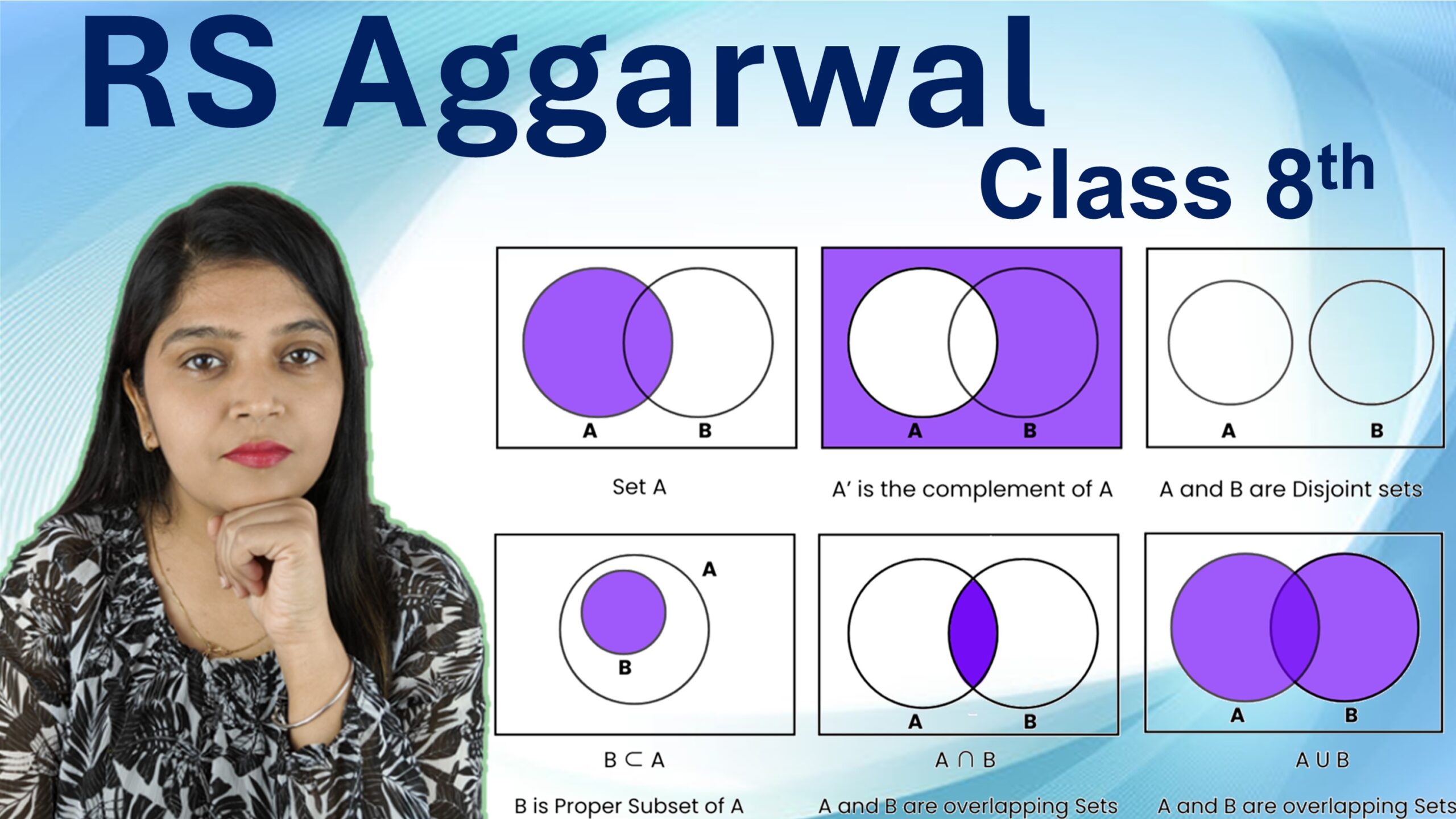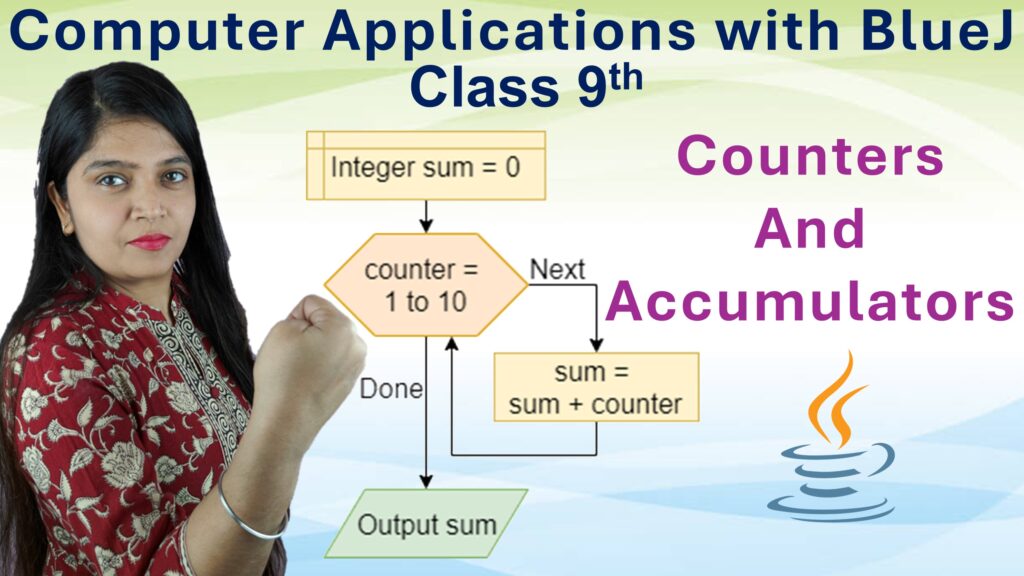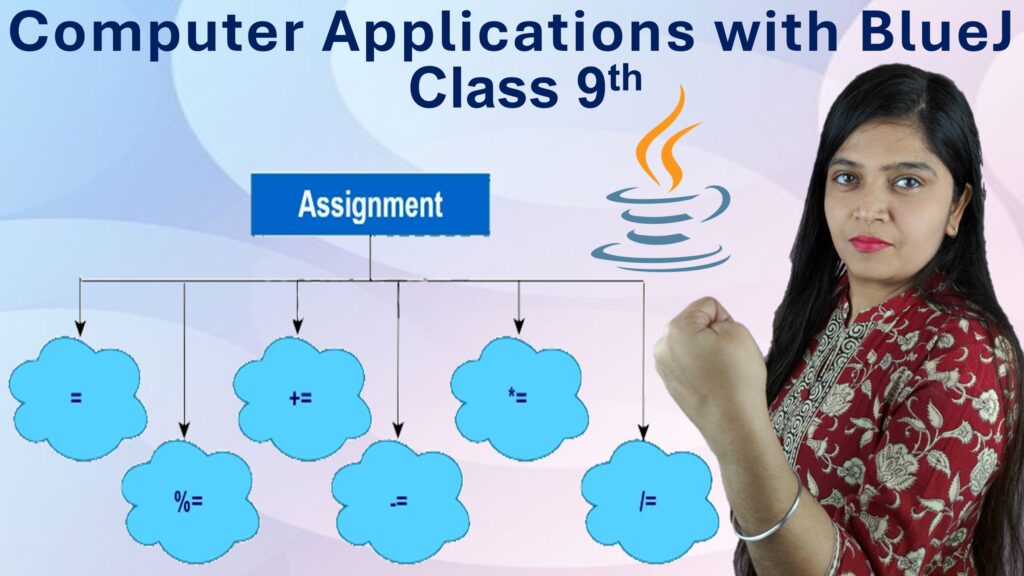Exercise: 5-C
Q1: Let A = {a, b, c, d}, B = {b, c, e} and C = {a, b, e}. Find:
i. \(A \cup B\)
Step 1: A = {a, b, c, d}, B = {b, c, e}
Step 2: Union means combine all elements from A and B, without duplicates.
A ∪ B = {a, b, c, d, e}
Answer: {a, b, c, d, e}
ii. \(B \cup C\)
Step 1: B = {b, c, e}, C = {a, b, e}
Step 2: Combine all distinct elements.
B ∪ C = {a, b, c, e}
Answer: {a, b, c, e}
iii. \(A \cup C\)
Step 1: A = {a, b, c, d}, C = {a, b, e}
Step 2: Combine all elements without repetition.
A ∪ C = {a, b, c, d, e}
Answer: {a, b, c, d, e}
iv. \(A \cap B\)
Step 1: Find elements common to both A and B.
Common elements = {b, c}
Answer: {b, c}
v. \(B \cap C\)
Step 1: Elements common to both B and C = {b, e}
Answer: {b, e}
vi. \(A \cap C\)
Step 1: A = {a, b, c, d}, C = {a, b, e}
Common elements = {a, b}
Answer: {a, b}
Q2: Let A = {2, 3, 4, 6}, B = {5, 7, 8} and C = {2, 7, 8, 9}. Find:
i. \(A \cup B\)
Step 1: List all elements of A and B.
A = {2, 3, 4, 6}, B = {5, 7, 8}
Step 2: Combine all elements without repetition.
A ∪ B = {2, 3, 4, 5, 6, 7, 8}
Answer: {2, 3, 4, 5, 6, 7, 8}
ii. \(B \cup C\)
Step 1: List all elements of B and C.
B = {5, 7, 8}, C = {2, 7, 8, 9}
Step 2: Combine all elements without duplicates.
B ∪ C = {2, 5, 7, 8, 9}
Answer: {2, 5, 7, 8, 9}
iii. \(A \cup C\)
Step 1: A = {2, 3, 4, 6}, C = {2, 7, 8, 9}
Step 2: Combine all elements without repetition.
A ∪ C = {2, 3, 4, 6, 7, 8, 9}
Answer: {2, 3, 4, 6, 7, 8, 9}
iv. \(A \cap B\)
Step 1: Find common elements in A and B.
A = {2, 3, 4, 6}, B = {5, 7, 8}
Step 2: No common elements.
Answer: ∅
v. \(A \cap C\)
Step 1: Find common elements in A and C.
A = {2, 3, 4, 6}, C = {2, 7, 8, 9}
Step 2: Common element = {2}
Answer: {2}
vi. \(B \cap C\)
Step 1: B = {5, 7, 8}, C = {2, 7, 8, 9}
Step 2: Common elements = {7, 8}
Answer: {7, 8}
Q3: Let A = {1, 4, 7, 8} and B = {4, 6, 8, 9}. Find
i. \(A – B\)
Step 1: A = {1, 4, 7, 8}, B = {4, 6, 8, 9}
Step 2: A – B means elements in A that are not in B.
Step 3: Remove 4 and 8 from A because they are in B.
A – B = {1, 7}
Answer: {1, 7}
ii. \(B – A\)
Step 1: B = {4, 6, 8, 9}, A = {1, 4, 7, 8}
Step 2: B – A means elements in B that are not in A.
Step 3: Remove 4 and 8 from B because they are in A.
B – A = {6, 9}
Answer: {6, 9}
Q4: Let \(\xi = \{13, 14, 15, 16, 17, 18, 19, 20, 21\}\), A = {13, 17, 19} and B = {14, 16, 18, 20}. Find:
i. \(A’\)
Step 1: Universal set \(\xi\) = {13, 14, 15, 16, 17, 18, 19, 20, 21}
Step 2: A = {13, 17, 19}
Step 3: A′ means all elements in \(\xi\) that are not in A.
Step 4: Remove 13, 17, 19 from \(\xi\)
A′ = {14, 15, 16, 18, 20, 21}
Answer: {14, 15, 16, 18, 20, 21}
ii. \(B’\)
Step 1: B = {14, 16, 18, 20}
Step 2: B′ means all elements in \(\xi\) that are not in B.
Step 3: Remove 14, 16, 18, 20 from \(\xi\)
B′ = {13, 15, 17, 19, 21}
Answer: {13, 15, 17, 19, 21}
Q5: Let \(\xi=\left\{x\middle|x\in\mathbb{Z}, -4\le x\le4\right\}\), A = \(\left\{x\middle|x\in\mathbb{W}, x<4\right\}\) and B = \(\left\{x\middle|x\in\mathbb{N}, 2<x\le4\right\}\). Find:
i. \(A’\)
Step 1: Universal set \(\xi = \{-4, -3, -2, -1, 0, 1, 2, 3, 4\}\)
Step 2: A is the set of whole numbers less than 4.
Whole numbers: \(\mathbb{W} = \{0, 1, 2, 3, 4, \ldots\}\)
So, A = {0, 1, 2, 3}
Step 3: A′ = elements in \(\xi\) that are not in A.
A′ = \{-4, -3, -2, -1, 4\}
Answer: {-4, -3, -2, -1, 4}
ii. \(B’\)
Step 1: B is the set of natural numbers where \(2 < x \le 4\)
Natural numbers: \(\mathbb{N} = \{1, 2, 3, 4, 5, \ldots\}\)
So, B = {3, 4}
Step 2: B′ = elements in \(\xi\) that are not in B.
B′ = \{-4, -3, -2, -1, 0, 1, 2\}
Answer: {-4, -3, -2, -1, 0, 1, 2}
Q6: Let \(\xi=\left\{x\middle|x\in\mathbb{N}, x\ is\ a\ factor\ of\ 144\right\}\), A = \(\left\{x\middle|x\in\mathbb{N}, x\ is\ a\ factor\ of\ 24\right\}\), B = \(\left\{x\middle|x\in\mathbb{N}, x\ is\ a\ factor\ of\ 36\right\}\), C = \(\left\{x\middle|x\in\mathbb{N}, x\ is\ a\ factor\ of\ 48\right\}\). Find:
Step 1: List all sets.
ξ = {1, 2, 3, 4, 6, 8, 9, 12, 16, 18, 24, 36, 48, 72, 144}
A = {1, 2, 3, 4, 6, 8, 12, 24}
B = {1, 2, 3, 4, 6, 9, 12, 18, 36}
C = {1, 2, 3, 4, 6, 8, 12, 16, 24, 48}
i. \(A’\)
A′ = ξ − A = {9, 16, 18, 36, 48, 72, 144}
Answer: {9, 16, 18, 36, 48, 72, 144}
ii. \(B’\)
B′ = ξ − B = {8, 16, 24, 48, 72, 144}
Answer: {8, 16, 24, 48, 72, 144}
iii. \(C’\)
C′ = ξ − C = {9, 18, 36, 72, 144}
Answer: {9, 18, 36, 72, 144}
iv. \(A \cup B\)
A ∪ B = {1, 2, 3, 4, 6, 8, 9, 12, 18, 24, 36}
Answer: {1, 2, 3, 4, 6, 8, 9, 12, 18, 24, 36}
v. \(B \cup C\)
B ∪ C = {1, 2, 3, 4, 6, 8, 9, 12, 16, 18, 24, 36, 48}
Answer: {1, 2, 3, 4, 6, 8, 9, 12, 16, 18, 24, 36, 48}
vi. \(A \cup C\)
A ∪ C = {1, 2, 3, 4, 6, 8, 12, 16, 24, 48}
Answer: {1, 2, 3, 4, 6, 8, 12, 16, 24, 48}
vii. \(A \cap B’\)
B′ = {8, 16, 24, 48, 72, 144}, A = {1, 2, 3, 4, 6, 8, 12, 24}
A ∩ B′ = {8, 24}
Answer: {8, 24}
viii. \(B \cap C’\)
C′ = {9, 18, 36, 72, 144}, B = {1, 2, 3, 4, 6, 9, 12, 18, 36}
B ∩ C′ = {9, 18, 36}
Answer: {9, 18, 36}
ix. \(C – A\)
C = {1, 2, 3, 4, 6, 8, 12, 16, 24, 48}, A = {1, 2, 3, 4, 6, 8, 12, 24}
C − A = {16, 48}
Answer: {16, 48}
x. \(A – (B \cap C)\)
B ∩ C = common in B and C = {1, 2, 3, 4, 6, 12}
A = {1, 2, 3, 4, 6, 8, 12, 24}
A − (B ∩ C) = {8, 24}
Answer: {8, 24}
Q7: Considering the sets given in Q6, state whether the following statements is true or false:
Given:
ξ = {1, 2, 3, 4, 6, 8, 9, 12, 16, 18, 24, 36, 48, 72, 144}
A = {1, 2, 3, 4, 6, 8, 12, 24}
B = {1, 2, 3, 4, 6, 9, 12, 18, 36}
C = {1, 2, 3, 4, 6, 8, 12, 16, 24, 48}
i. \(A \cap (B \cup C) = A\)
Step 1: B ∪ C = {1, 2, 3, 4, 6, 8, 9, 12, 16, 18, 24, 36, 48}
Step 2: A ∩ (B ∪ C) = common with A
A = {1, 2, 3, 4, 6, 8, 12, 24}
A ∩ (B ∪ C) = A
Answer: True
ii. \(A \subset C\)
A = {1, 2, 3, 4, 6, 8, 12, 24}
C = {1, 2, 3, 4, 6, 8, 12, 16, 24, 48}
All elements of A are in C → Yes
Answer: True
iii. \(B \subseteq C\)
Check if every element of B is in C.
B = {1, 2, 3, 4, 6, 9, 12, 18, 36}
C = {1, 2, 3, 4, 6, 8, 12, 16, 24, 48}
9 ∉ C, 18 ∉ C, 36 ∉ C → Not subset
Answer: False
iv. \(A \cap C’ = \phi\)
C′ = ξ − C = {9, 18, 36, 72, 144}
A = {1, 2, 3, 4, 6, 8, 12, 24}
A ∩ C′ = ∅ (No common element)
Answer: True
Q8: Let A = {a, b, c, d, e}, B = {a, c, e, g} and C = {b, e, f, g}. Then verify the following identities:
Given:
A = {a, b, c, d, e}
B = {a, c, e, g}
C = {b, e, f, g}
i. \(B \cup C = C \cup B\)
B ∪ C = {a, c, e, g, b, f} = {a, b, c, e, f, g}
C ∪ B = {b, e, f, g, a, c} = {a, b, c, e, f, g}
Answer: True
ii. \(B \cap C = C \cap B\)
B ∩ C = common elements = {e, g}
C ∩ B = common elements = {e, g}
Answer: True
iii. \(A \cup (B \cup C) = (A \cup B) \cup C\)
B ∪ C = {a, b, c, e, f, g}
A ∪ (B ∪ C) = {a, b, c, d, e, f, g}
A ∪ B = {a, b, c, d, e, g}
(A ∪ B) ∪ C = {a, b, c, d, e, f, g}
Answer: True
iv. \(A \cap (B \cap C) = (A \cap B) \cap C\)
B ∩ C = {e, g}
A ∩ (B ∩ C) = A ∩ {e, g} = {e}
A ∩ B = {a, c, e}
(A ∩ B) ∩ C = {a, c, e} ∩ {b, e, f, g} = {e}
Answer: True
v. \(A \cup (B \cap C) = (A \cup B) \cap (A \cup C)\)
B ∩ C = {e, g}
A ∪ (B ∩ C) = A ∪ {e, g} = {a, b, c, d, e, g}
A ∪ B = {a, b, c, d, e, g}
A ∪ C = {a, b, c, d, e, f, g}
(A ∪ B) ∩ (A ∪ C) = {a, b, c, d, e, g}
Answer: True
vi. \(A \cap (B \cup C) = (A \cap B) \cup (A \cap C)\)
B ∪ C = {a, b, c, e, f, g}
A ∩ (B ∪ C) = A ∩ {a, b, c, e, f, g} = {a, b, c, e}
A ∩ B = {a, c, e}
A ∩ C = {b, e}
(A ∩ B) ∪ (A ∩ C) = {a, c, e} ∪ {b, e} = {a, b, c, e}
Answer: True
Q9: Let A = {b, c, d, e} and B = {d, e, f, g} be two subsets of the universal set \( \xi = \{b, c, d, e, f, g\} \). Verify the following:
Given:
A = {b, c, d, e}
B = {d, e, f, g}
ξ = {b, c, d, e, f, g}
i. \((A \cup B)^\prime = A^\prime \cap B^\prime\)
Step 1: Find \(A \cup B\) = {b, c, d, e, f, g}
⇒ \((A \cup B)^\prime = ξ − (A ∪ B) = ∅\)
Step 2: Find \(A^\prime = ξ − A = \{f, g\}\)
Find \(B^\prime = ξ − B = \{b, c\}\)
Now \(A^\prime \cap B^\prime = \{f, g\} \cap \{b, c\} = ∅\)
Both LHS and RHS are ∅
Answer: True
ii. \((A \cap B)^\prime = A^\prime \cup B^\prime\)
Step 1: Find \(A \cap B = \{d, e\}\)
⇒ \((A \cap B)^\prime = ξ − \{d, e\} = \{b, c, f, g\}
Step 2: Already found:
\(A^\prime = \{f, g\}, B^\prime = \{b, c\}\)
So, \(A^\prime \cup B^\prime = \{f, g\} ∪ \{b, c\} = \{b, c, f, g\}\)
Both LHS and RHS are \{b, c, f, g\}
Answer: True
Q10: Fill in the blanks:
i. \(A \cup A =\) ______
Step: Union of a set with itself gives the same set.
Answer: A
ii. \(A \cap A =\) ______
Step: Intersection of a set with itself gives the same set.
Answer: A
iii. \(A \cup \phi =\) ______
Step: Union of any set with the empty set gives the set itself.
Answer: A
iv. \(A \cap \phi =\) ______
Step: Intersection of any set with the empty set is empty set.
Answer: ϕ
v. \((A \cup B)^\prime =\) ______
Step: By De Morgan’s Law: Complement of union is intersection of complements.
Answer: \(A^\prime \cap B^\prime\)
vi. \((A \cap B)^\prime =\) ______
Step: By De Morgan’s Law: Complement of intersection is union of complements.
Answer: \(A^\prime \cup B^\prime\)
Q11: Let \(\xi = \{x \mid x \in \mathbb{N},\ 4 \le x \le 18\}\), and subsets A, B, and C be defined as follows:
A = {x | x is a multiple of 2}
B = {x | x is a multiple of 3}
C = {x | x ∈ ℕ and x < 11}
Step 1: List all elements of ξ:
ξ = {4, 5, 6, 7, 8, 9, 10, 11, 12, 13, 14, 15, 16, 17, 18}
Step 2: Now list subsets:
A = Multiples of 2 = {4, 6, 8, 10, 12, 14, 16, 18}
B = Multiples of 3 = {6, 9, 12, 15, 18}
C = Natural numbers < 11 from ξ = {4, 5, 6, 7, 8, 9, 10}
i. \((A \cup B)^\prime = A^\prime \cap B^\prime\)
LHS:
A ∪ B = {4, 6, 8, 9, 10, 12, 14, 15, 16, 18}
⇒ (A ∪ B)’ = ξ − (A ∪ B) = {5, 7, 11, 13, 17}
RHS:
A’ = ξ − A = {5, 7, 9, 11, 13, 15, 17}
B’ = ξ − B = {4, 5, 7, 8, 10, 11, 13, 14, 16, 17}
A’ ∩ B’ = {5, 7, 11, 13, 17}
Answer: True
ii. \((A \cap B)^\prime = A^\prime \cup B^\prime\)
LHS:
A ∩ B = {6, 12, 18}
⇒ (A ∩ B)’ = ξ − {6, 12, 18} = {4, 5, 7, 8, 9, 10, 11, 13, 14, 15, 16, 17}
RHS:
A’ = {5, 7, 9, 11, 13, 15, 17}
B’ = {4, 5, 7, 8, 10, 11, 13, 14, 16, 17}
A’ ∪ B’ = {4, 5, 7, 8, 9, 10, 11, 13, 14, 15, 16, 17}
Answer: True
iii. \(A – B = A \cap B^\prime\)
LHS:
A − B = {4, 8, 10, 14, 16}
RHS:
A ∩ B’ = A ∩ (ξ − B) = {4, 8, 10, 14, 16}
Answer: True
iv. \(A \cup (B \cap C) = (A \cup B) \cap (A \cup C)\)
Step 1:
B ∩ C = {6, 9}
A ∪ (B ∩ C) = A ∪ {6, 9} = {4, 6, 8, 9, 10, 12, 14, 16, 18}
Step 2:
A ∪ B = {4, 6, 8, 9, 10, 12, 14, 15, 16, 18}
A ∪ C = {4, 5, 6, 7, 8, 9, 10, 12, 14, 16, 18}
(A ∪ B) ∩ (A ∪ C) = {4, 6, 8, 9, 10, 12, 14, 16, 18}
Answer: True







Leave a Comment